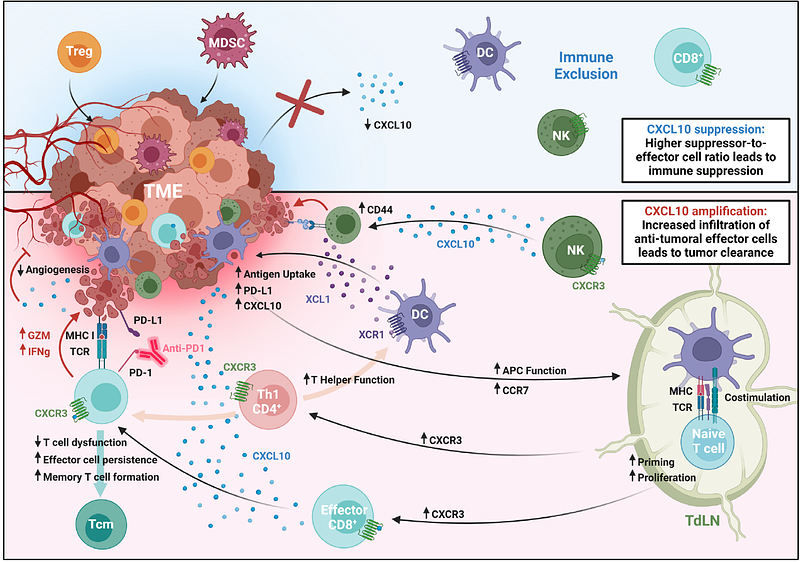Exploiting the CXCR3/CXCL10 pathway to override tumor immune suppression by enhancing immune trafficking and effector cell priming in head and neck squamous cell carcinoma

Exploiting the CXCR3/CXCL10 pathway to override tumor immune suppression by enhancing immune trafficking and effector cell priming in head and neck squamous cell carcinoma
Shinn, C. K.; Saddawi-Konefka, R.; Salanga, C.; Schokrpur, S.; Gutkind, J. S. K.; Handel, T. M.
AbstractThe immune-suppressive nature of the tumor microenvironment (TME) has limited the impact of immune checkpoint blockade in many cancers, often by restricting the infiltration and activation of anti-tumoral CD8+ T, CD4+ T, and NK cells. Here, we utilized murine models of head and neck squamous cell carcinoma and demonstrated that intratumoral (IT) delivery of CXCL10 drives tumor elimination and inhibits recurrence. CD8+ T cells recruited to tumors display enhanced activation, increased tumor antigen specificity, and decreased markers of T cell exhaustion, indicating that CXCL10 not only directs cell migration, but also enhances T cell effector functions. Despite delivery of CXCL10 into tumors, CD8+ and CD4+ T cells also show enhanced presence and proliferation in tumor-draining lymph nodes (TdLNs), consistent with antigen presentation and trafficking of these cells between tumors and TdLNs. CXCL10 also stunts angiogenesis and lymphangiogenesis within the TME, which likely contributes to its antitumoral effects. Finally, enhanced tumor clearance was observed by combining IT CXCL10 and anti-PD-1. Together, these findings provide the rationale for the clinical evaluation of CXCL10 as a strategy to enhance the efficacy of immunotherapy.